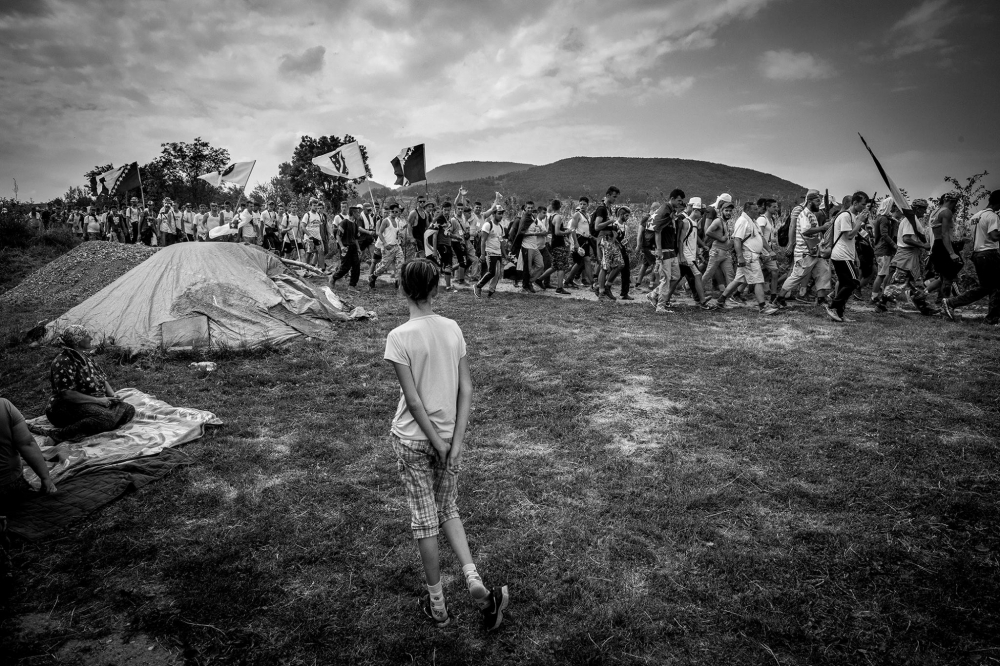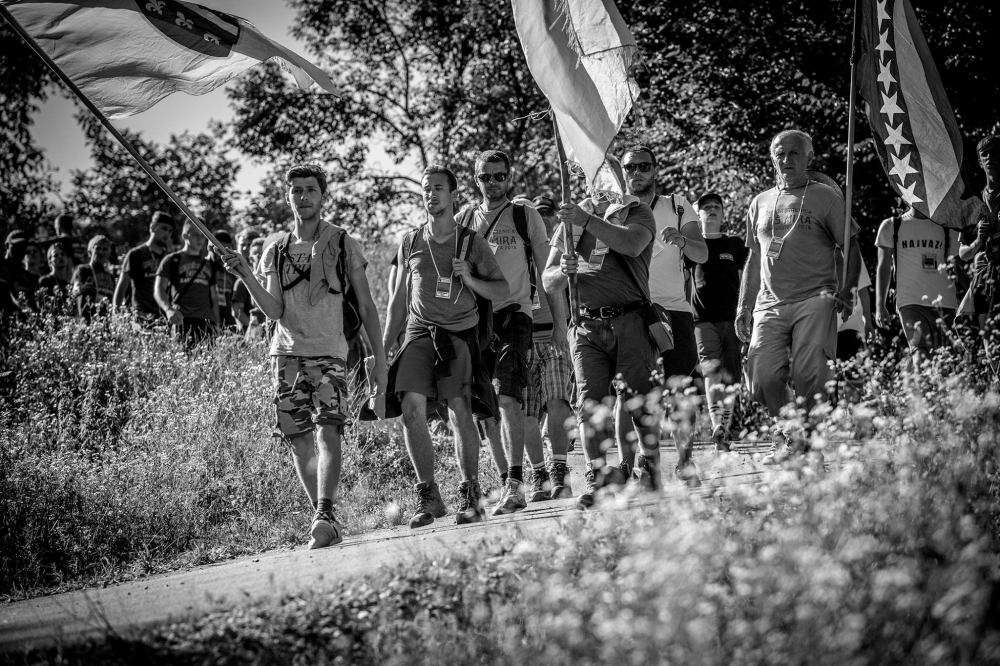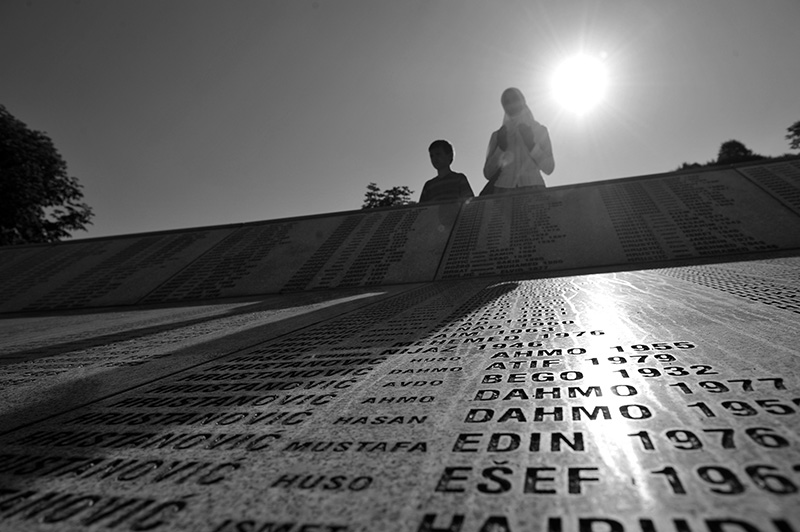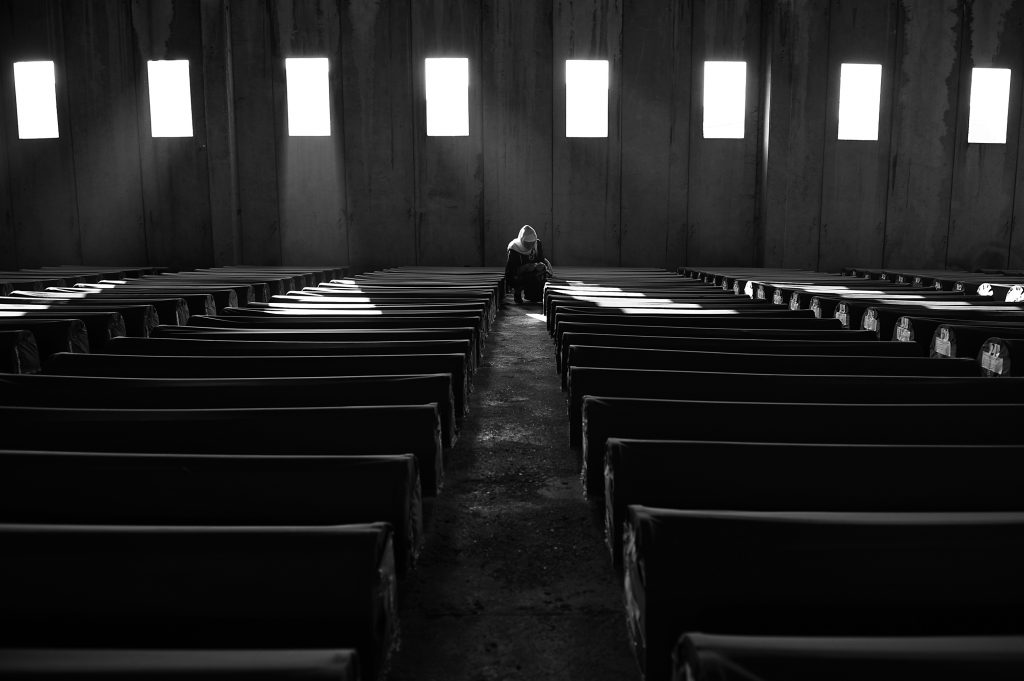
On the morning of 7 July, Srebrenica felt like a ghost town. I departed Sarajevo earlier that morning with a group of fellow graduate students from the University of Denver. We were preparing to participate in the Marš Mira, the annual peace march that commemorates the Srebrenica genocide.
On the morning of 7 July, Srebrenica felt like a ghost town. I departed Sarajevo earlier that morning with a group of fellow graduate students from the University of Denver (DU). The eight of us filed off of the bus in Srebrenica, unsure of what to anticipate for the subsequent few days. We were preparing to participate in the Marš Mira, the annual peace march that commemorates the Srebrenica genocide. The trek retraces over 60 miles of mountainous terrain where 10,000 Muslim men, boys, and some women attempted to escape from Srebrenica in 1995. Only 2,000 people survived the death march and arrived at the village of Nezuk before searching for their families at the refugee camp in Tuzla.
In Srebrenica, the silence stunned me. Not a soul was in sight. The air even seemed to hold its breath. A cat scampered across the street, making haste, not wanting to be seen moving about. Curtains were drawn. Windows were latched. We walked up the street in hushed murmurs.
Early the following morning – 8 July – my group departed Srebrenica with a number of other people, mostly men, heading for Nezuk. The sun slowly rose and warmed the chill that had paralyzed me throughout the previous day. My mind raced in anticipation of what this march would entail. A few students from my DU program participated in the Peace March last year, but their stories could never have sufficiently prepared me for the experience of those three days retracing the steps where thousands of people fled and thousands were brutally murdered.
Some of the most striking parts of the walk came when listening to the stories of other marchers. While walking for miles and miles, I heard a number of incredible stories, heartbreaking stories, stories of resilience, and stories of hopelessness. I met people from my own country whose parents fled the war and resettled in the States. I met numerous Bosnians, all of whom were personally affected by the war and, specifically, by the genocide.
Many young adults, around my age, were curious about my story. What flag are you carrying? The Colorado flag. It’s a state in America. Why would you carry a state flag? Good question. (Pause) I love being from Colorado, and we are quite proud of our state. Why are you in Bosnia? Why are you coming on this march? What are you studying? The questions continued on, and I mostly received a warm appreciation that I, a young woman from America, would choose to join this commemorative march.

When I reciprocated the questions, however, I began to understand the frustration and, often, the hopelessness towards the current state of affairs in Bosnia.
One man, in particular, age 28, had completed two master’s degrees. Rusmir is his name. “Like Russia,” he said, trying to help us Americans understand his pronunciation. As we tiptoed down the steep hills of the Bosnian countryside, he explained that he finished his first degree in criminal law, but could not find a job. He decided to return to school and to complete another master’s. Yet, this highly educated, accomplished, deeply thoughtful and inquisitive man still could not find employment.
After deciding to look abroad for opportunities, he disclosed that he recently received an offer from a McDonalds in Germany. Holding back my shock, I asked if he planned to take it.
“Yes. I do.”
I was silenced. Until speaking with this man, I could not grasp the desperation unemployment has created in this country. He wanted to stay. He desperately wanted to live and work in his homeland, but there was nothing for him.
Rusmir’s story was told over and over again, but by different people. I heard such similar stories – highly educated, brilliant young people, unable to find a job in Bosnia, desperate to find any work regardless of their over-qualification. I asked what these young adults identified as barriers to change in this country, and they frequently discussed the Dayton Peace Accords, the failures of the constitution, and the stagnation of government and public institutions. Some people have resorted to emigrating. Some people claim it will take a revolution to affect change. Some shrug their shoulders and respond with a blank stare.
As an outsider, particularly an American outsider, it is difficult to make any statement or overarching suggestion for Bosnia. Trying to maintain the role of the observer, I am starting to see tremendously divisive components of the current culture that perpetuate misunderstanding and obstruct healing. As long as division proliferates, opposition that elicits change to stagnant and corrupt government systems is likely to remain futile. Reflecting on the Peace March, for instance, proved to be one such example. Allow me to explain.
The final day, our third day of the Marš Mira, we woke up in a mist. It felt appropriate. Somber. Quiet.
Many hours and 21 miles later, we tip-toed down the steepest grade of the hike into the cemetery and memorial site. People lined the streets with quiet tears streaming down their faces. We kept walking through the crowd into the memorial. The families of victims lined the marble slabs engraved with the names of those massacred. They were sobbing. We were sobbing. I felt crushed.

This place, this memorial encapsulates thousands of peoples’ realities. This is where families were separated, loved ones massacred, lives destroyed. The Marš Mira is tremendously important. Remembering and commemorating the survivors and the victims of the 1995 Srebrenica genocide is imperative. However, this is the only cluster of days in the entire year that the atrocity is corporately recognized. And yet, these survivors, these families live every day with the burden of memory, loss, and grief – many of whom do not have a community of support to help bear the weight.
Moreover, there is the denial of genocide. The reality that Srebrenica was a ghost town before the memorial weekend suggests an outright resistance towards acknowledging the lived experiences of thousands. The Bosnian Serbs living in the municipality disappeared. This division presents a painful stalemate.
As I listened to the stories of survivors as well as to the stories of young adults unable to find work, a common thread seemed to link these narratives – no one is listening.
For instance, the trail of the Marš Mira is walked once a year. The memorialization of the genocide occurs once a year. The non-Muslim residents of Srebrenica can shut out the commemoration once a year. With this structure, a space to foster dialogue, recognition, and understanding remains nonexistent. And this resistance to recognizing narratives echoes throughout Bosnia; it is not simply confined to Srebrenica or to a certain ethnic group or to one generation.
After the Peace March, I met with Amir Kulaglić, a survivor of the genocide who currently works as an advisor to the mayor of Srebrenica and has committed his life to making transitional justice a realization in Bosnia. He, too, acknowledged the division such a singular memorialization creates and is working on building the infrastructure of the trail, so that people may freely walk it throughout the year to grieve and process when needed rather than be restricted to a few days in July.
I have heard a few locals talk about just wanting to move on from the war. They want people to stop dwelling on what happened over twenty years ago. However, the narratives of the war continue to be denied or downplayed, at best. Without the establishment of truth, without the ability to share their stories and their experiences, the survivors suffer protracted trauma from blatant denial. Amir encapsulated this experience stating, “I thought that men could die just once, but after a genocide, you can die again. First, when your life is taken away. Again when your bones are transferred, but denial of victims is the last phase of genocide. Every day we spend in silence. It is a denial that you have existed as a human being.”

The Marš Mira, then, seems to serve as an outcry, not just against what happened there, but against what has not yet happened; of the proliferation of injustice, of the outright denial of genocide. While this turmoil is justifiable, the perpetuation of such a polarizing event without more frequent opportunities for processing the past enables a divisive atmosphere throughout Bosnia.
In consideration of transitional justice, it is imperative that survivors are given a platform to tell their stories. Many thought that protected witness trials would provide this. This is not the case. The witnesses were asked questions, asked about certain pieces of their stories, what the prosecution teams deemed important for the trial. These dynamics return survivors to an inferior position. Empowerment is imperative for addressing trauma, and the environment of the courts does not offer such a space.
While truth commissions are structured as a means for testimonials, the impersonal environment lacks the support often needed for survivors to feel safe sharing their stories and to be supported by a community. Some benefit is gained from these forums, but often survivors are re-traumatized by recalling their stories – an unsurprising psychological response.
Amir was able to heal largely through his involvement with other survivors and their shared purpose in advocacy. Through their collective healing, Amir has been able to communicate his story to wider audiences. However, as long as political structures and institutions deny, downplay and disregard the truth, many survivors will remain disenfranchised and unable to heal.
Transitional justice is a complicated concept – one that involves macro-level institutional reform to micro level individual considerations. I am humbled and astounded by the resilience of people like Amir to continue living, to continue advocating for holistic justice that has yet to be realized.
I feel as though I hold part of the responsibility to now act. To write. To listen. To share. To do something. The question I’ve been asking since I arrived in Bosnia continues to reverberate and crescendo: What is my obligation, and how am I going to respond?
This question continues to echo, over a month after the march. I constantly think about the survivors, but I also think about the next generation of the young adults my age who are suffering both the trauma of the war and the negligence and stagnation of a country unable to heal, reconcile, and progress onward. Devoid of employment opportunities and surrounded by a divided, silently hostile environment, young adults perhaps unsurprisingly choose to leave – even if leaving entails working at a McDonalds. How long will this continue?
I believe Bosnia is craving a new identity. When I told people at home I would be here for the summer, most people simply associated this place with the war. This incredibly beautiful country needs to be recognized for more than the atrocities of the 1990s. However, as long as the narratives of war remain unheard and negated, a generation of survivors must cling to these experiences and the younger generations will predominantly move away, unable to break down the barriers solidified over the past two decades.







Yvonne Oswald
Dear Laura, I came upon your article while researching some of my own photos on Mars Mira. Congratulations to and thanks for your sensitive and well researched article on Mars Mira and the Srebrenica area. I am an Austrian photographer and first visited the area in 2012 with one of the last NGOs BhB (Bauern helfen Bauern) continually working there since 1995. I have taken part in Mars Mira in 2012, 2015 and 2017 (so we must have crossed ways) and photographically documented it. My experience is very similar to yours, additionally I also see an increasing and worrying attempt of influence by radical groups not only during Mars Mira, but all year round by heavy investments in new Mosques (always with Madrassa schools). Every year we see more of them, but nearly no other investment in the area. There is a strong reluctance here in Europe to talk about the Srebrenica events which is also the case for any photos. Only small articles appear around July 11th. Thank you again for this insightful article, every word counts for these poor people. Here is alink to some of my photos http://www.yvonneoswald.at/de/portfolio/reportage/mars-mira-reportage-bosnien.html
Best
Yvonne Oswald